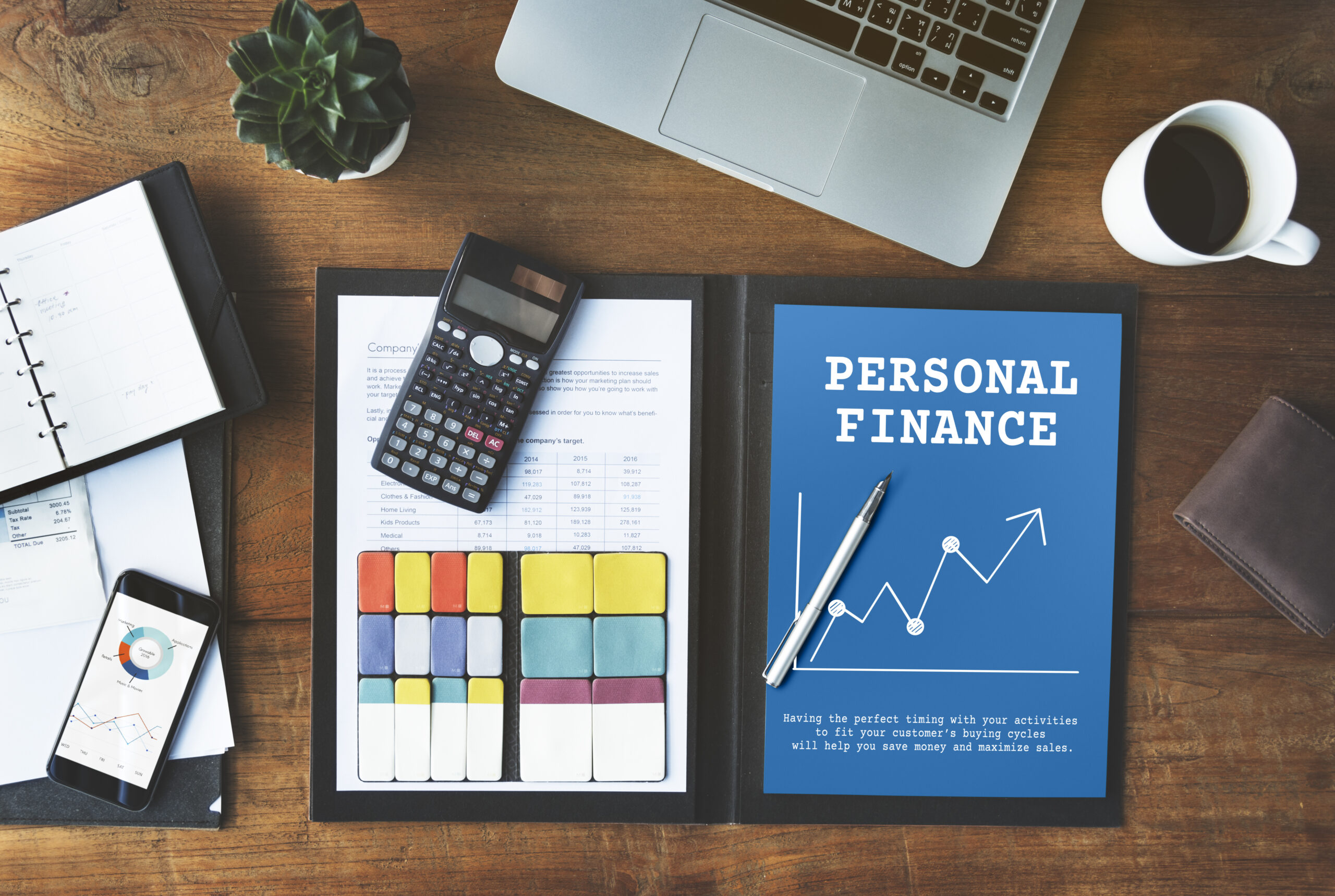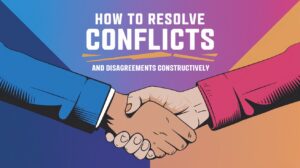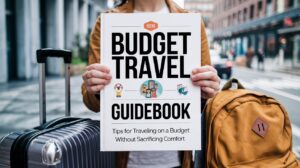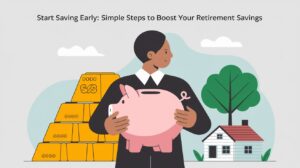Setting up a personal budget is one of the most vital steps toward financial stability and success. Whether one is trying to get out of debt, save for a big purchase, or simply have better control over one’s money, a well-planned budget helps to reach one’s goals. In this article, we take you through simple, actionable steps on how to start off your personal budget today. By the end, you’ll have a solid understanding of how to manage your personal finance effectively.
Why is a personal budget important?
Before describing the steps, let me clarify why having a personal budget is important. A personal budget will enable you to:
- Track your spending: know where the money is going each month.
- Control your expenses: Do not overspend, know where to cut back.
- Meeting financial goals: Be it retirement, a holiday, or the repayment of debts, a budget helps in funneling money towards what is most important.
- Reduce Stress: Understanding your finances could help soothe anxiety and uncertainty.

Step 1: Understand Your Income
The first step in personal budgeting is to know exactly how much money you have coming in each month. This includes:
- Salary: Your regular paycheck after taxes.
- Side Income: Any income coming in from side gigs, freelancing, or others.
- Passive Income: Income derived from investments, rental properties, or interest.
Example: You get $3,000 each month from your job after paying all the taxes, then another $500 in addition from a side hustle; that would make your monthly income $3,500.
Key Note: It’s important to calculate your net income (after taxes and deductions) rather than your gross income.
Step 2: Record Your Expenses
Understand next, where it is being assigned. You need to divide up your expenses into two major categories:
Fixed Expenses:
- Rent/Mortgage
- Utilities
- Insurance
- Loan repayments
- Subscriptions
Variable Expenses:
- Groceries
- Entertainment
- Eating out
- Transportation
- Clothes
Example: For instance, if the rent is $1,200 per month, $150 for utilities, $400 for groceries, and $200 for entertainment, all of these are expenses to be noted.
Tip: Download an app for budgeting or just take a simple spreadsheet and write down every single expense for a month. It shows you how you really spend your money.
Step 3: Setting Financial Goals
Setting clear financial goals is crucial in creating a personal budget that works for you. Your goals can be either short-term or long-term:

Short-term objectives:
- Building an emergency fund
- Pay off a credit card
- Save for a vacation
Long-Term Goals:
- Save for retirement
- Buy a house
- Paying off student loans
Example: For instance, to save $5,000 for vacation next year, you would need to put aside approximately $417 per month for the coming 12 months.
Key Note: Your goals should be specific, measurable, achievable, relevant, and time-bound.
Step 4: Establish a Budget Plan
Now that you know all about your income, expenses, and financial goals, it’s time to actually make a budget plan. Here’s how:
- Calculate Your Total Income: Start by using your monthly income.
- Fixed Expenses: Subtract your fixed expenses from your total income.
- Allocate for Variable Expenses: That is, assign a portion of the remaining income to your variable expenses.
- Plan Savings and Goals: Account for money to be set aside for savings and your financial goals.
Example: If your income is $3,500, fixed expenses are $1,500, and variable expenses are $800, you’ll have $1,200 left for savings and financial goals.
Tip: Use the 50/30/20 rule as a simple budgeting guideline:
- Needs (fixed expenses), 50% of income
- 30% on wants (variable expenses)
- 20% to savings and debt repayment.
Step 5: Tracking Your Budget and Making Changes
The creation of a budget is not a one-time thing, but it requires monitoring and making adjustments regularly. Here’s how you can keep your budget on track:
- Review monthly: At the beginning of every month, review your budget to get insights into where you might have gotten it all wrong.
- Adjust as Needed: If you are overspending in a category, adjust it in the next month’s budget.
- Employ Budgeting Tools: Apps like Mint, YNAB (You Need A Budget), or an Excel spreadsheet will help in easily managing one’s budget.

Example: If you overspent $100 on dining out, try to cut entertainment by that much the following month.
Key Note: Be flexible. Your budget should change as your income, expenses, and financial goals change..
Budgeting: Real Life Example
Now, let me give a real life example of how these steps come together.
Case Study: Sarah’s Budget
Sarah is a 28-year-old marketing professional who brings home $4,000 a month after taxes. She recently decided it was about time she took charge of her personal finance by creating a budget. Here’s how Sarah followed the steps:
- Income: Sarah calculated her monthly income of $4,000.
- Expenses: She accounted for her fixed expenses, $1,800, and her variable expenses, $1,000, leaving her with $1,200.
- Goals: Sarah wants to save $10,000 in two years for a house down payment. She will save $417 per month for this goal.
- Budget Plan: Sarah was left with $783 for miscellaneous expenses after deducting all her expenses and savings.
- Monitor: Sarah checks her budget on a monthly basis, making adjustments where necessary. Certain months, she spends less in restaurants and takes that money to put into her savings account.
Following these easy steps, Sarah is well on her way to her financial goals.
Step 6: Avoid Common Budgeting Mistakes
While building a budget is simple, many of us fall into common traps that derail our efforts. Avoid these mistakes:
- Being Unrealistic: When goals are too ambitious or expense cuts severe, dismal failure may be the result.
- Small Purchases: Frequently purchasing small amounts quickly adds up and blows your budget.
- Emergency fund not inclusions: Always include money for contingencies, such as car repairs or hospital bills.
- Not Reviewing Regularly: Your budget should be a living document that changes with your life circumstances.
Example: If you buy coffee every day on the way to work, $3 a day may not seem like much, but it totals up to $60 a month.
Tip: It’s also smart to factor in a small cushion for unexpected expenses and indulgences.

Step 7: Learn and improve your budgeting skills.
Budgeting is an art, and like any other art, it’s perfected through practice. Following are a few ways one could get better at it:
- Educate yourself: invest in some personal finance books to improve your knowledge.
- Seek Professional Advice: Where appropriate, advice should be sought from a financial adviser.
- Join a community: Either online forums or local groups; each dealing with personal finance issues.
Book Recommendation: A good read for beginners would be “The Total Money Makeover” by Dave Ramsey, which one can practically implement in their lives to get themselves out of debt and build wealth.
Conclusion: Make Your Own Budget Today
Setting up a personal budget may be a bit challenging, but this following easy step will help you get in control of your personal finance and achieve your financial goals. Remember:
- Know your income and expenses.
- Establish realistic financial goals.
- Create a flexible budget plan.
- Account for budget and make adjustments regularly.
Final Key Note: Budgeting does not mean living a tight life; it’s about letting your money work for you. Starting a personal budget today will lay the foundation for a secure financial future.
Overview of Important Steps:
- Know your income.
- Track your expenses.
- Set financial goals.
- Develop a budget plan.
- Monitor and adjust.
- Avoid common mistakes.
- Enhance your budgeting skills.
Take that first step now and prepare your personal budget today!







